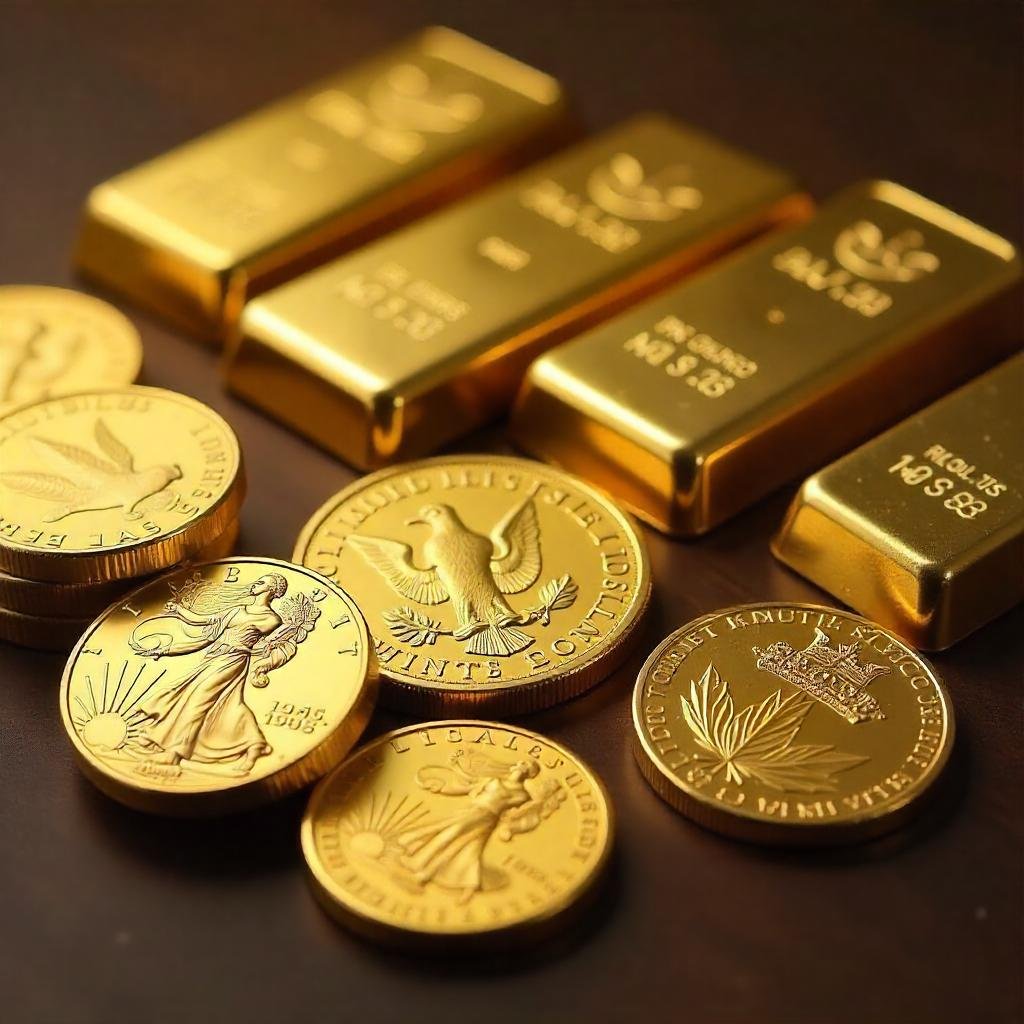Gold, a metal that has captivated humanity for millennia, like a timeless treasure stands as a symbol of wealth, power, and enduring value. Its lustrous appearance and remarkable properties have cemented its place in history, culture, and finance. But what exactly is gold, and why does it command such universal respect?
Summary
The Allure of Gold: Properties and Value
Gold is a chemical element with the symbol Au and atomic number 79. It is a dense, soft, malleable, and ductile metal with a bright, slightly reddish-yellow color. Unlike many other metals, gold is virtually inert, meaning it does not react with most chemicals. This exceptional resistance to corrosion and tarnish ensures its enduring beauty and integrity over time.
The yellow metal’s inherent scarcity, combined with these unique physical and chemical properties, are the primary drivers of its immense value. Gold is difficult to find and extract, making it a precious commodity. Its malleability allows it to be shaped into intricate designs for jewelry and coinage, while its electrical conductivity makes it vital in electronics. The combination of beauty, durability, and rarity has historically made it a coveted material, transcending cultures and civilizations.

We typically associate gold with its classic yellow hue; however, it can indeed appear in various colors. These different shades are achieved by alloying pure gold with other metals. For instance, white gold is created by mixing gold with palladium, nickel, or silver. Rose gold derives its reddish tint from the addition of copper, while green gold incorporates silver and sometimes cadmium. The purity of gold is measured in karats, with 24-karat gold being 99.9% pure, and lower karatage indicating a higher proportion of other metals in the alloy.
Gold’s Journey Through History: Currency and Confidence
The discovery of gold’s value stretches back to ancient civilizations. Archaeological findings indicate that the earliest known instances of gold being recognized and utilized by humans date back to as early as 4000 BC (Before Christ) in Eastern Europe.
The Americas (particularly South America) saw gold use emerge by the 3rd millennium BC , and Africa has a long and significant history of gold mining and trade, particularly from the 1st millennium CE (Common Era).
Gold use also emerged independently or through early trade networks in various parts of Asia, with dates ranging from the 4th to 1st millennia BCE (Before Common Era). , depending on the specific region
Its aesthetic appeal and resistance to tarnish made it ideal for adornment, signifying status and power.
The transition of gold into a form of currency began much later. The first standardized gold coins are believed to have been minted in Lydia (modern-day Turkey) around 600 B.C. This innovation provided a universally accepted medium of exchange, facilitating trade and economic growth across vast regions. The inherent value of gold, its divisibility, and its resistance to degradation made it an ideal choice for coinage.

As the world economy evolved, gold’s role deepened, transforming from mere currency into a fundamental reserve of value. This concept gained significant traction during the 19th and 20th centuries, particularly with the establishment of the gold standard, where a country’s currency was directly convertible into a fixed amount of gold. This system provided a sense of stability and confidence in currencies, as the value was backed by a tangible, precious metal. While most countries have moved away from a strict gold standard, gold continues to serve as a vital reserve asset for central banks worldwide, acting as a hedge against economic uncertainty and inflation.
The widespread consensus surrounding gold’s value stems from a combination of its intrinsic properties and its historical role. Its rarity, durability, and aesthetic appeal are undeniable. However, the collective belief and centuries of trust in its value are equally crucial. Gold’s universal acceptance as a store of wealth transcends borders and political systems, making it a truly global asset.
The Great Gold Rushes: A Global Phenomenon
The concept of a “gold rush” refers to a period of rapid, mass migration of miners to newly discovered goldfields. These events were often characterized by intense excitement, economic booms, and significant demographic shifts.
One of the most iconic gold rushes, and arguably the one that truly ignited the global fascination, was the California Gold Rush, which began in 1848. The discovery of gold by James W. Marshall at Sutter’s Mill near Coloma, California, sparked a feverish migration of “forty-niners” from across the United States and around the world. This event had a profound impact on the development of California and the American West.
While California’s rush is famous, gold rushes occurred in various other locations throughout history, including Australia (Victoria and New South Wales in the 1850s), Canada (the Klondike Gold Rush in the late 1890s), and South Africa (Witwatersrand in the 1880s), each leaving an indelible mark on the regions they impacted.
Gold’s Contemporary Counterparts: A Modern Perspective
While gold’s unique properties and historical significance make it unparalleled, the question of whether another metal could truly be its equivalent in “all points of view” is complex. From a purely chemical and physical standpoint, no other single metal possesses the exact combination of gold’s inertness, malleability, density, and aesthetic appeal. Platinum and palladium share some noble metal properties, being highly resistant to corrosion, but they lack gold’s distinctive color and centuries of cultural and monetary prominence. Silver, while historically a monetary metal, is far more abundant and prone to tarnishing.

In the modern financial landscape, the discussion often turns to Bitcoin as a potential “digital gold.” This comparison stems from several shared characteristics:
- Scarcity: Both gold and Bitcoin have a finite supply. There’s a limited amount of gold on Earth that can be mined, and Bitcoin has a hard cap of 21 million coins that will ever be created. This scarcity is a fundamental driver of their value.
- Decentralization: Gold’s value is not controlled by any single government or institution. Similarly, Bitcoin operates on a decentralized blockchain network, free from central authority. This makes both assets resistant to direct political manipulation.
- Durability and Divisibility: Gold is durable and can be melted down and reshaped. Bitcoin, as a digital asset, is infinitely durable (as long as the network exists) and can be easily divided into minute fractions, allowing for micro-transactions.
- Store of Value: Both are increasingly viewed as hedges against inflation and economic instability. When traditional currencies lose purchasing power, investors often turn to gold or Bitcoin to preserve wealth.
However, crucial differences exist. Gold has a tangible physical presence, a history spanning millennia, and widespread industrial and jewelry applications. Bitcoin, on the other hand, is entirely digital, its value derived from network consensus and cryptographic security. While Bitcoin has gained significant traction and acceptance, it lacks the deep-rooted historical and cultural significance of gold. The volatility of Bitcoin also remains significantly higher than that of gold, making it a more speculative asset for many.
For example, imagine a scenario of global economic uncertainty. Historically, people would flock to gold, physically holding it or investing in gold-backed assets as a safe haven. Today, a similar sentiment might see investors turn to Bitcoin, as it offers a digital alternative to traditional financial systems. The appeal of Bitcoin, like gold, lies in its perceived ability to retain value independent of government-issued fiat currencies.
Gold’s Value Fluctuations: Recent Trends
The price of gold, like any commodity, fluctuates based on supply, demand, geopolitical events, and economic indicators. Providing exact “recent lowest” and “recent highest” values without a specific timeframe would be misleading, as these figures constantly change. However, we can observe general trends.
In recent years, particularly since the 2008 financial crisis, gold has experienced significant price appreciation, reaching new all-time highs. This surge was often driven by investors seeking safety amidst economic uncertainty, low interest rates, and inflationary pressures.
Conversely, periods of stronger economic growth, higher interest rates, and a strengthening U.S. dollar can sometimes put downward pressure on gold prices, as investors may shift to other assets perceived as offering higher returns.
To find the most up-to-date and specific recent low and high values for gold, it is always recommended to consult reliable financial news sources, commodity market data providers, or financial charts that track the price of gold per ounce (typically in USD).
Acquiring Gold: Safety and Accessibility
Procuring gold, whether for investment or personal use, can be done safely and securely through various reputable channels. It is not necessarily “easy” in the sense of finding it freely, but rather accessible through established markets.
For investors, the most common and secure methods include:
- Purchasing Physical Gold: This involves buying gold bullion (bars or coins) from reputable dealers, mints, or banks. It’s crucial to ensure the gold’s authenticity and arrange for secure storage, either personally or through a trusted vaulting service.
- Gold Exchange-Traded Funds (ETFs): These are investment funds that track the price of gold and are traded on stock exchanges. ETFs offer a convenient way to gain exposure to gold price movements without the need for physical storage.
- Gold Mining Stocks: Investing in shares of gold mining companies allows investors to participate in the gold market indirectly, benefiting from the company’s extraction and sales of gold.
- Gold Futures Contracts: For more experienced investors, futures contracts allow for the buying or selling of gold at a predetermined price on a future date.
For those interested in gold for jewelry or artistic purposes, purchasing from established jewelers and retailers provides assurance of quality and authenticity. Regardless of the method, due diligence is paramount to ensure the legitimacy of the seller and the purity of the gold. Always verify credentials, read reviews, and understand the terms of purchase and storage.



